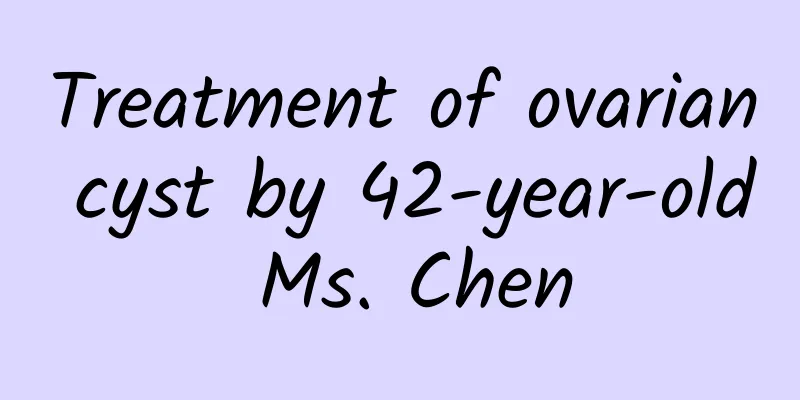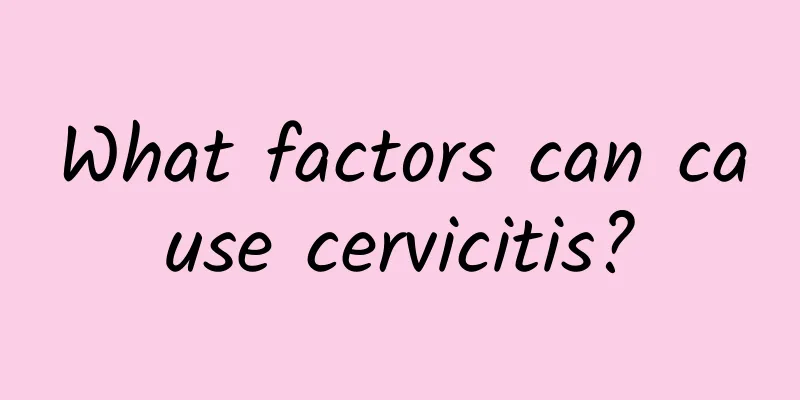Treatment of ovarian cyst by 42-year-old Ms. Chen

|
Ms. Chen, 42 years old, had been experiencing dull pain in her lower abdomen and yellow vaginal discharge for the past six months. Due to her busy work schedule, she never took it seriously until she had a physical examination at her workplace two months ago, when an ultrasound examination showed a right ovarian cyst measuring 2.3 cm × 2.7 cm. She was given anti-inflammatory drugs and intravenous infusions by a Western doctor for 10 days, but the symptoms did not improve, so she sought treatment from a traditional Chinese doctor. Examination: dull pain and discomfort in the right lower abdomen, yellow vaginal discharge, normal menstrual cycle and menstrual volume, dry and hard stool, one bowel movement every 2-3 days, good appetite, poor sleep at night, red tongue, yellow and greasy tongue coating, slippery pulse. TCM diagnosis is damp-heat internal accumulation type of stagnation, treatment is to clear away heat, detoxify and eliminate dampness, supplemented by phlegm-resolving, dispersing and reducing swelling. Prescription: Viola yedoensis, dandelion, Prunella vulgaris, Belamcanda chinensis, Patrinia suspensa, Forsythia suspensa, Scutellaria barbata, Coix seeds, Red vine, Golden vine, Plantago, Alisma orientalis, Curcuma, Fritillaria thunbergii, Licorice. Decoction in water and take 3 times, 1 dose per day. During the treatment, avoid spicy food, keep a happy mood, and avoid fatigue. After taking 20 doses, Ms. Chen came back for a follow-up visit: the pain in her lower abdomen on the right side had disappeared, her bowel movements were normal, and an ultrasound examination showed no abnormalities in the uterine appendages, and her disease was cured. Explanation of the prescription: Forsythia suspensa, dandelion and Viola yedoensis in the prescription clear away heat, detoxify and resolve nodules; Patrinia suspensa, Belamcanda chinensis, Caulis spatholobi, Scutellaria barbata and Rhizoma scutellariae clear away heat and detoxify; Caulis spatholobi and Rhizoma scutellariae also have the effect of promoting blood circulation; Curcuma aromatica promotes blood circulation, promotes qi and relieves pain; Fritillaria thunbergii and Spica prunellae soften and resolve nodules; Plantago seed, Alisma orientalis and Coix seed promote diuresis and eliminate dampness; Coix seed also strengthens the spleen to prevent other drugs from damaging the body; Licorice harmonizes all the drugs. |
<<: Eat black fungus regularly to prevent pelvic inflammatory disease
>>: Infertility after marriage is caused by adnexitis
Recommend
What to do if you have uterine contractions during mid-pregnancy due to adenomyosis
What about uterine contractions during mid-pregna...
What are the dangers of dysmenorrhea
Dysmenorrhea is a problem that all women will fac...
Understand the etiology and pathogenesis of vulvar leukoplakia.
Did you know that the most common sites for vulva...
How harmful is the first abortion for a girl? Things to note when a girl has her first abortion
Some couples do not take effective protective mea...
The main causes of ectopic pregnancy
Among these gynecological diseases, the high inci...
KO cellulite! Aerobic exercise alone is not effective
Do you think you have too much fat on your body a...
Cost of treating pelvic effusion
How much does it cost to treat pelvic effusion? E...
TCM Pathogenesis of Ovarian Cyst
Ovarian cyst is a common gynecological disease. T...
Patients should always pay attention to daily precautions for vaginitis
Vaginitis is a common disease in gynecological cl...
How to treat postpartum cervical erosion? 3 clinical methods for treating postpartum cervical erosion
Patients with postpartum cervical erosion can gen...
Habitual miscarriage is caused by these 7 reasons
Nowadays, many women do not get enough rest durin...
Symptoms of bacterial vaginosis in women
Vaginitis refers to an inflammation of the female...
What are the common symptoms of primary dysmenorrhea?
Among the many types of dysmenorrhea, primary dys...
Treatment of ectopic pregnancy must be selected according to the patient's specific condition
For patients with ectopic pregnancy, the earlier ...
What are the causes of moderate cervical erosion? What causes moderate cervical erosion?
Many women will experience cervical erosion. Cerv...









